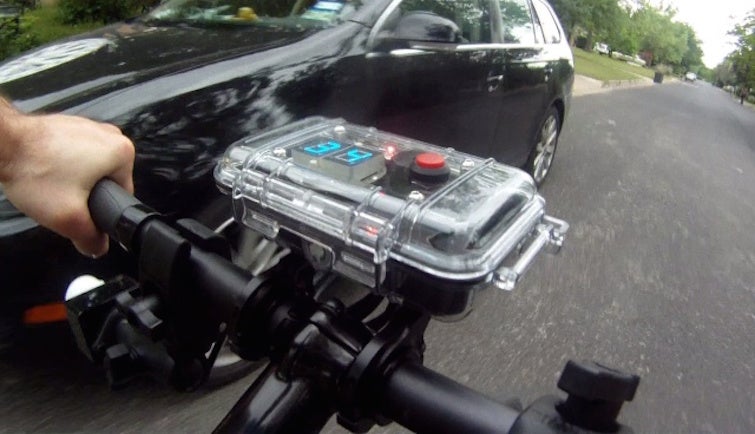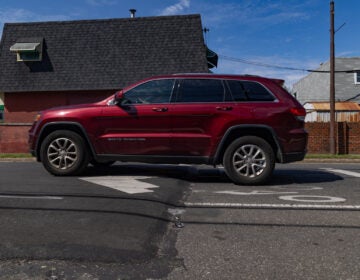Cheap ultrasonic device could help Philly police enforce PA’s safe passing law

Bicycle advocacy groups have enjoyed a string of successes pushing state legislatures around the country to adopt safe passing laws, but getting those laws enforced is hard, both for political and technical reasons.
On the political side, there are issues of traffic enforcement’s place in the pecking order when it comes to allocating scarce police enforcement resources. And local elected officials often have a weak appetite for any blowback that may come from issuing more tickets.
Evidence of efforts on the part of the Philadelpha Police Department to enforce Pennsylvania’s safe passing law, which prohibits motorists from passing cyclists unless they have four feet of clearance, are hard to come by, and anecdotally, Philly cycling advocates say they’ve not seen it enforced.
The Police Department doesn’t keep detailed records on summary offense traffic citations. In 2014, they issued 347 citations to drivers related to incidents with bicyclists, but it’s unclear how many of those were specifically about the four foot passing law, or may have involved other incidents. For context, there were 1,196 citations issued in total.
On the technical side, measuring the distance between cars and bikes is difficult. After states enact safe passing laws, it takes time for police officers to gain experience eyeballing what those safe passing gaps look like, and there haven’t been tools available to measure them.
That’s why there’s been a lot of excitement in the bike advocacy world about this cheap new ultrasonic device police are using in Chattanooga, TN to measure safe passing gaps precisely, and issue warnings to motorists who pass cyclists too closely.
Sarah Goodyear at CityLab explains how it works:
Then Chattanooga got a new mayor, Andy Berke, and a new police chief, both of whom were receptive to suggestions about improving safety for people on bikes. In discussions with the chief, Simmons got the go-ahead to see if he could come up with a way to enforce Tennessee’s three-foot law.
Chattanooga calls the result BSMART (its technical name is the C3FT Device).Developed by Codaxus, an engineering firm in Austin, Texas, the handlebar-mounted device measures the distance of passing vehicles with ultrasonic waves. The bike-car gap is then shown on a large digital display, and when a car comes closer than 36 inches, BSMART beeps—alerting an officer to a violation. Paired with a GoPro camera, the device both detects and records a car’s proximity to a bike.
“It’s easy to use,” says Simmons. “It doesn’t distract me. I just ride along until it starts beeping.”
The devices are installable on existing police bikes, and at just $1,400, were cheap enough for a local bike advocacy group to donate one to the police department.
Simmons has only been issuing warnings to motorists, who often aren’t aware of the safe passing law, but told Goodyear he’ll write tickets if drivers give him attitude. And he’s worked out an arrangement with a judge who will try to sentence motorists to take a Bicycling 101 course, if it comes to that.
Would this be illegal in Pennsylvania cities? After all, PA is the last state in the nation to ban local police from using radar for speed enforcement. Wouldn’t that ban also extend to this ultrasonic device?
Mason Lane, chief of staff for state Rep. Brian Sims, confirms the answer is no. Sims’s office says the devices fall outside of the local radar prohibition.
That statute only makes reference to electronic devices that measure speed.
“Even if the ultrasonic devices were construed to be covered under the term, “radio-microwave”, or its general meaning,” Lane said in an email, “then I think it’d still be allowable since it’s not measuring speed, but rather distance.”
Whether the Philadelphia Police Department would be open to giving these devices a test spin to enforce the safe passing law is anyone’s guess, but neither the price tag nor state law appear to present significant hurdles.
WHYY is your source for fact-based, in-depth journalism and information. As a nonprofit organization, we rely on financial support from readers like you. Please give today.






